The experiences presented represent only a few examples to show the diversity of the areas and groups served, best practices and replicable initiatives, and the Region's vast diversity and geographical scope. This analysis makes it possible to draw lessons that can be used to make adjustments that will effectively benefit excluded and vulnerable populations. It will also have a significant impact on the population's social protection in health, both in terms of the strategies and approaches of PAHO's technical and financial cooperation and those of other partners, and in the design and formulation of public health policies by the countries' decision-makers.
In Panama, the Strategic Plan for Reducing Maternal and Perinatal Morbidity and Mortality, 2006–2009 was elaborated, followed by a decree in March 2006 that guarantees free services in preventive care and medical and social care for every woman during pregnancy, childbirth, and the postpartum in all Ministry of Health facilities. In addition, the Presidency's social protection program, which provides support for 25,000 families living in extreme poverty, has included in its Comprehensive Care Package of Health Services free and regular maternal and perinatal home care coverage for communities living in remote areas and excluded communities.
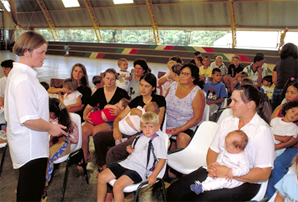
In Argentina, progress was made in priority subnational units, such as the periurban and rural areas of Jujuy Province, as part of the effort to strengthen the provincial health system. The goal was to improve the skills of primary care human resources and the access to and quality of health services for women of childbearing age, girls, boys, and families at high risk of social exclusion. There were 798 first-level-of-care maternal and child health care providers trained, and opportunities were created for conducting critical reviews of care practices so as to improve them and make them more comprehensive.
In Honduras, the program ACCESSO continued to apply specific strategies for mothers and children in three northern municipios in Choluteca, in order to improve access to health services for pregnant women, women with newborns, and mothers of children under 5; this effort is based on the right of mothers and children to receive these services. The initiative involves training community leaders so they can become health monitors. In addition, a community-administered collective fund was established to give delivery care to women who do not have the resources to travel to the maternal-and-child-health clinic.
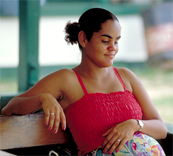 In Belize, through a horizontal technical cooperation initiative with Jamaica, the Safe Motherhood Program is under way to train health workers in surveillance of maternal mortality, verbal autopsy, and the development of surveillance standards for maternal morbidity and mortality. Safe Motherhood Committees were established at the national, regional, and district levels and criteria-based clinical auditing was introduced. Nontraditional health workers—community nurse's aides, traditional midwives, public health inspectors, and vector-control personnel–participated in surveillance of maternal morbidity and mortality. Physicians' offices for managing high-risk patients were established in regional hospitals, most of them operated under a multidisciplinary approach. The experience has helped improve the surveillance system of maternal morbidity and mortality at very low cost or at no extra cost.
In Belize, through a horizontal technical cooperation initiative with Jamaica, the Safe Motherhood Program is under way to train health workers in surveillance of maternal mortality, verbal autopsy, and the development of surveillance standards for maternal morbidity and mortality. Safe Motherhood Committees were established at the national, regional, and district levels and criteria-based clinical auditing was introduced. Nontraditional health workers—community nurse's aides, traditional midwives, public health inspectors, and vector-control personnel–participated in surveillance of maternal morbidity and mortality. Physicians' offices for managing high-risk patients were established in regional hospitals, most of them operated under a multidisciplinary approach. The experience has helped improve the surveillance system of maternal morbidity and mortality at very low cost or at no extra cost.
In Guatemala, in Microregion IV municipios, the Center for Comprehensive Maternal and Child Care (CAIMI) was turned into an intermediate referral center. Activities included training health care workers, improving CAIMI infrastructure, implementing the active system for health surveillance at the grassroots level, strengthening the referral system, implementing the perinatal information system and establishing the "Maternal House" for housing pregnant women.
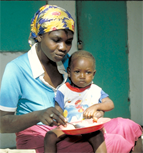 In Haiti, free health care services for pregnant women and women giving birth were promoted, which resulted in a presidential decree in August 2005. Financial resources are being mobilized to help implement free maternal health care services in one of the 10 departments in the country by 2006.
In Haiti, free health care services for pregnant women and women giving birth were promoted, which resulted in a presidential decree in August 2005. Financial resources are being mobilized to help implement free maternal health care services in one of the 10 departments in the country by 2006.
In Bolivia, the Health Star Service initiative is helping women in outlying urban areas and urban-rural areas. During the first stage, barriers that blocked access to the services of the Maternal and Child Universal Insurance were identified. This service offers a package of free services to women during pregnancy and childbirth and to children under 5. The initiative has two components: the first aims at strengthening health services management through a gender approach; the second aims at empowering women in the community. At the end of 2005, the strategy was put in practice in a municipio of La Paz, where a baseline study was conducted and participants were trained according to the aforementioned parameters.
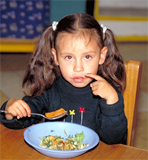 In the Dominican Republic, the Family Health Action Project carried out with the Catholic Medical Mission and with support from the Bristol-Myers Squibb Foundation, aims at strengthening the Catholic Church's health network in communities through local leaders, health workers and families and by reaching pregnant adolescent and adults through parish counselors and helping them during pregnancy, childbirth and infant care until the child turns the 5. The plan for monitoring basic indicators of morbidity, mortality, nutritional surveillance, and micronutrient intake, among others, continues to be pursued.
In the Dominican Republic, the Family Health Action Project carried out with the Catholic Medical Mission and with support from the Bristol-Myers Squibb Foundation, aims at strengthening the Catholic Church's health network in communities through local leaders, health workers and families and by reaching pregnant adolescent and adults through parish counselors and helping them during pregnancy, childbirth and infant care until the child turns the 5. The plan for monitoring basic indicators of morbidity, mortality, nutritional surveillance, and micronutrient intake, among others, continues to be pursued.
PAHO focused efforts on optimizing the Primary Health Care (PHC) approach/strategy throughout its technical cooperation activities. Several areas/units have adopted or are incorporating this approach/strategy into their planning process and daily operations. For example, PHC is the foundation of the regional strategy for preventing and controlling chronic diseases, and it is acknowledged to be essential for reaching universal access to HIV prevention, care and treatment. Moreover, the optimization that PHC fosters has furthered strengthened the interprogrammatic work within PAHO, which translates into an integrated approach in the cooperation with the countries.
In the Dominican Republic, the Project to Strengthen and Implement the National Program for Food Fortification (GAIN Initiative) targets children under 5 and women of childbearing age through the fortification of sugar and wheat flour. This effort hopes to reduce anemia due to iron deficiency from 27% to 20% and Vitamin A deficiency from 23% to 10% in children younger than 5 years, as well as to reduce the incidence of neural tube defects by 20%.
In Honduras, the Ministry of Health's Program of Nutrition and Food Security determined that nutrition programs were ineffective due to the following causes: a lack of distribution of specific foods to diminish chronic malnutrition and anemia in children aged between 6 and 24 months, weak educational components, a lack of coordination between programs and actions, and duplication. Several NGOs were trained in how to use the EPI-INFO program for managing information, promoting the use of new growth standards, and reviewing their interventions so as to target them to children under 2 years old in geographical areas with a higher incidence of individuals growth retardation.
In Nicaragua's Cusmapa Municipio, the Municipal Council, the local health system (SILAIS), and the community developed an action plan to enhance available health services, strengthen the capability of the municipal government to deal with health determinants and the demand for health services, promote community participation in health activities, and improve environmental conditions in the community. As a result, activities in the municipio were incorporated into health actions, a closer relationship was forged between the government and the community, and health service coverage increased (for example, maternal-and-child health service coverage reached 50%). This plan is a model that can be used by other municipios in the country.
Immunization has come to be a family and community health initiative. Vaccination Week in the Americas (VWA) is expanding, aiming to reach adult men and women, young people, and older adults, as well as children. Furthermore, this initiative focuses on high-risk municipios, border areas, and indigenous communities, among other groups and areas. In the last two years, more than US$ 1.2 million have been mobilized for VWA. In 2005, 36 countries participated in the initiative, 12 of which focused efforts on public media campaigns. More than 38 million people were vaccinated (17.6 million children, 13 million adults older than 60 years of age, 3 million adults, 2.2 million women of childbearing age, and more than 25,000 indigenous people; 2 million people received the yellow fever vaccine). In 2006, 39 countries and territories of the Region participated in VWA, aiming to immunize about 40 million people. In addition to vaccination activities, VWA is an opportunity to offer other comprehensive health services such as the administration of vitamin A, parasiticides, and folic acid.
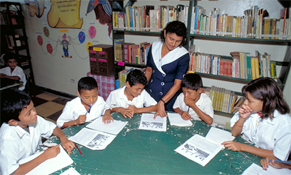
In Guyana, within the framework of Health Promoting Schools, the Caribbean "National Vision 20:20 Plan" was conducted in 13 schools in low-income communities without social protection. Teachers, health professionals, and volunteer parents participated in testing the vision of 2,710 students. Detected eye-problem cases were referred for additional testing and evaluation at the Poor Vision Clinic at Georgetown's public hospital. The Ministry of Education and Social Services purchases eyeglasses for families that cannot afford them.
In Peru, the Basic Intervention in Oral Health project was implemented schools in excluded and remote communities. Activities promote oral health and repair dental caries using the Atraumatic Restorative Treatment (PRAT) technique. Twenty-four dentists who travel to the country's most vulnerable and isolated areas to provide itinerant care were trained in the technique. PRAT was disseminated, its inclusion in the comprehensive health insurance scheme was promoted, and support was given for purchasing specific supplies. Technical assistance also has been given to integrate this activity into a broader preventive dentistry strategy that incorporates fluoridating salt for human consumption, oral hygiene, and expanded coverage of oral health services.
In Trinidad and Tobago, work at the elementary school level was conducted to strengthen the comprehensive approach to school health programs. Training programs
were prepared on health promotion and disease prevention directed at primary health care workers and personnel at health facilities and schools in three pilot areas.
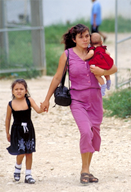 In Honduras, an interinstitutional committee for the protection and care of orphaned children due to HIV/AIDS and children at risk for the infection was constituted to strengthen the organizations that serve this population and help promote and administer resources. The Global Fund to Fight AIDS, Tuberculosis, and Malaria (which did not include this item in the country's proposal) contributed financial resources and the project's activities began to be formulated.
In Honduras, an interinstitutional committee for the protection and care of orphaned children due to HIV/AIDS and children at risk for the infection was constituted to strengthen the organizations that serve this population and help promote and administer resources. The Global Fund to Fight AIDS, Tuberculosis, and Malaria (which did not include this item in the country's proposal) contributed financial resources and the project's activities began to be formulated.
In El Salvador, "Programa Ternura" (the Tenderness Program) aims at coordinating efforts to improve living conditions of families, especially children and adolescents, within the framework of protecting their human rights. The program aims at promoting healthy lifestyles and environments, and at diminishing violent conditions, addictions, maternal and infant mortality, HIV and AIDS, and problems associated with sexual and reproductive health.
Guatemala introduced the pentavalent vaccine (DPT-hepatitis B, plus Haemophilus influenzae type B) into the regular vaccination series for children under 1 during Vaccination Week in the Americas (VWA) 2005 (April 24–30), with children born from 1 January 2005 to the time of VWA being gradually vaccinated with the new vaccine component. To that end, an Interagency Coordinating Committee was formed, in which the office of the First Lady, several embassies, United Nations agencies, bilateral cooperation agencies, nongovernmental organizations and government social security organizations, and finance and social investment organizations participated. The initiative has received support from Finland and Sweden.
In February 2005, PAHO held an international conference, "Voices from the Field: Local Initiatives and Research on Juvenile Gang Violence in Central America." The conference was intended to establish an international and multisectorial dialogue about violence in Central American countries. The activity was jointly conducted with member institutions of the Inter-American Coalition for the Prevention of Violence, the Washington Office on Latin America, and the Foundation for Due Legal Process. More than 250 participants from El Salvador, Guatemala, Honduras, and Nicaragua, as well as from the United States (the Centers for Disease Control and Prevention, the University of California at L.A., and organizations from the Washington, DC, area) discussed youth gangs known as "maras." Participants expressed opinions about the urgent need for establishing public policies to address the causes—not simply the consequences—of the phenomenon. A call was made for placing more emphasis on preventing the problem rather than on repressing young people. As a result of the conference, the Central American Coalition for the Prevention of Juvenile Violence was established. The Coalition, which is made up of various governmental and nongovernmental organizations in the Central American countries, has been able to get the attention of various sectors of society and the media in just a few months. It intends to bring about changes in public policies in order to define preventive proposals.
Argentina, Colombia, El Salvador, Honduras, Nicaragua, and Peru have implemented the project "Promotion of Juvenile Development and Prevention of Violence" with financing from the German Agency for Technical Cooperation (GTZ) and Germany's Federal Ministry for Cooperation and Development of Germany (BMZ). Working teams have been organized in each country, and governmental and nongovernmental institutions, along with groups of young people, participate in them. These teams promote and coordinate activities, and seek to increase and improve initiatives. This process has led to the preparation and publication of documents on violence among adolescents and young adults.
The gender equality policy was launched in September 2005 as a result of a resolution adopted by PAHO's Directing Council. The resolution represents a milestone in PAHO's struggle to ensure equality of opportunities between women and men in terms of access to resources and health benefits, as well as in citizens' right to participate in determining the course and priorities of this development. The policy establishes that the objectives of gender equality and empowerment of women will permeate all PAHO's work, including technical cooperation areas, national policy development, and human resource management resources in the institution itself and in the health sector as a whole.
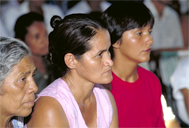 The strengthening of national capabilities for producing and analyzing data on gender equality crystallized in the formation of intersectorial mechanisms and in the publication of statistical booklets and analytical profiles of the health situation of women and men in Costa Rica, Guatemala, Honduras, Panama, and Peru.
The strengthening of national capabilities for producing and analyzing data on gender equality crystallized in the formation of intersectorial mechanisms and in the publication of statistical booklets and analytical profiles of the health situation of women and men in Costa Rica, Guatemala, Honduras, Panama, and Peru.
In El Salvador, the Interagency Program for Empowerment of Adolescent Women came to a close. The program was developed by the United Nations Interagency Gender Group under PAHO leadership. The program's achievements include increased care coverage for adolescents, health worker training in caring for adolescents from a perspective of protecting and promoting their human rights and empowering them, the integration of adolescents into community organizations, the lowering of institutional barriers to access to services, and the provision of supplementary equipment for comprehensive health care for this age group.
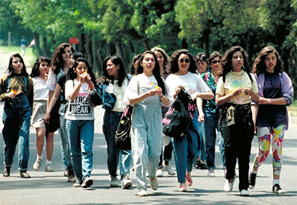
In Chile, the annual report on the Observatory of Gender Equity in Health was published. The Observatory coordinates academic organizations and civil society. Subjects in the publication include gender violence, citizen participation in health, unpaid health care, work and health, and sexual and reproductive health. The report is the result of efforts to monitor gender indicators from 2005 and the impact of health policies on eradication or reinforcement of gender inequities in health. An Observatory regional station encompassing a comprehensive gender and ethnicity approach was established in the IX Region of Araucanía, home to the country's majority mapuche communities. Mapuche community organizations participated, as did women's organizations that work in gender and health and with people with HIV/AIDS, and academic institutions such as the Temuco Border University. Currently, a database is being generated and monitoring indicators have been selected to measure gender and ethnic inequities in health in the Araucanía region, as a way to formulate proposals for public policies that can help improve women's health, especially that of Araucan women.
In Puerto Rico, technical cooperation focused on providing support for at-risk communities in prevention of violence, specifically violence against women and domestic violence. Based on research conducted by PAHO regarding men's knowledge, attitudes, and practices about sexual and reproductive health, in six Central American countries models of sexual and reproductive health initiatives were reviewed and new models of care and information were developed, targeted to men in the workplace and in recreation in the respective countries.
A study on HIV and gender was designed and conducted. Led by PAHO, the activity also had the participation of ministries of health and civil society agencies, including groups of persons living with HIV. Results will become the basis for reviewing standards and protocols in treatment of HIV in Belize, Honduras, and Nicaragua.
The "3x5" goal in the Region of the Americas was to have 600,000 persons in treatment by the end of 2005. By the end of that year, 680,000 persons were receiving antiretroviral treatment, more than 300,000 in Latin America and the Caribbean. In addition, the number of treatments increased, as did access to counseling, testing, and prevention of mother-to-child transmission interventions. The cost of drugs dropped, and cooperation with 37 countries of the Region was strengthened in line with the five strategic courses of action aimed at strengthening the health system infrastructure. Proposals for additional funding also were submitted to donors, in particular to the Global Fund to Fight AIDS, Tuberculosis, and Malaria. Finally, PAHO's Regional HIV Plan for the Health Sector 2006–2015 was launched, which offers the Region's countries a set of goals and milestones designed to put in place a comprehensive method of expanding the response to HIV.
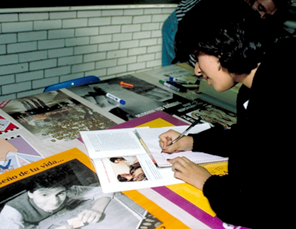
In the Bahamas and Suriname, an innovative communication campaign was developed to increase access to testing and to promote treatment in the services. The campaign, which relied on television and radio announcements, was carried out under the slogans "Take the Test" in Suriname and "Know Your Status" in the Bahamas. It has been responsible for an increase in the numbers of reported cases and in the number of people receiving treatment. Experts from 10 countries participated in a workshop in Suriname on applying this type of campaign elsewhere in the Caribbean.
In Mexico, a national media campaign was conducted against homophobia. The Ministry of Health's National Center for AIDS Prevention and Control, working with the National Board to Prevent Discrimination, launched the campaign. The campaign's slogan, "Homosexuality is not a problem, homophobia is," was disseminated through radio announcements in seven major cities.
Six journalists received awards for their coverage of the HIV/AIDS epidemic. REDSALUD ("Network Health"), the Communication Initiative, and the Ibero-American Foundation of New Journalism sponsored the awards in Latin America; CARICOM sponsored them in the Caribbean.
In Costa Rica and Peru, kits were distributed to health workers and sexual-assault victims for post-exposure HIV treatment. New access venues for HIV care were set up I Belize, Colombia, and Nicaragua; Belize also established access points for reproductive health services, Colombia and Nicaragua did so for victims of domestic violence. Along the Mexican-U.S. border, a project to improve monitoring and estimate the prevalence of HIV infection in vulnerable groups was implemented.
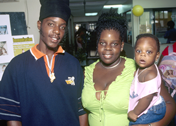 In Barbados and in the countries of the Eastern Caribbean, improvements were made to the care of those infected with HIV, as well as in adopting and adapting treatment standards for those infected. Health care providers and community organizations received training in the management of OPV services, and health care workers working in maternity wards were trained in preventing mother-to-child transmission. To further strengthen prevention, assistance was provided in couples referral, locating contacts, health education, and risk reduction.
In Barbados and in the countries of the Eastern Caribbean, improvements were made to the care of those infected with HIV, as well as in adopting and adapting treatment standards for those infected. Health care providers and community organizations received training in the management of OPV services, and health care workers working in maternity wards were trained in preventing mother-to-child transmission. To further strengthen prevention, assistance was provided in couples referral, locating contacts, health education, and risk reduction.
In Bolivia, the access to comprehensive preventive services by unregistered sex workers is being evaluated to better guide this population and upgrade the comprehensive preventive services (couples counseling, condoms, diagnosis and treatment of STIs, and voluntary HIV testing with counseling) provided to them.
In Cuba, a national multi-sector support group for the control and prevention of HIV/AIDS program was established and the National Strategic Plan for HIV/AIDS 2006–2010, "Patients Living with HIV," is under way. The Plan's goals are to halt and reverse the spread of HIV and sexually transmitted infections; to continue providing universal access to prevention, care, and treatment services; to strengthen the capacity of primary health care services and the operation of the laboratories of the country's HIV diagnostic network; and to promote communication among health workers.
In Belize, an action plan to prevent and control communicable diseases in the Central Prison was designed. The plan envisions providing training programs on HIV prevention to convicts and prison personnel, as well as ambulatory health care services for prisoners and antiretrovirals for those that require treatment. A support group for convicts with HIV has been constituted. A seroprevalence study revealed that HIV infection levels among prisoners were about the same as those in the overall population. This program is considered to be a "best practice model;" as such, it can be replicated in other prison programs elsewhere in the Region.
In Guyana, work in prisons relied on the "Excite, Include, and Commit"(EIC) methodology to empower and train convicts and officials in HIV infection, awareness of sexually transmitted infections, prevention, behavioral changes, and improvement in communication. Twenty-nine convicts and three prison guards received training; an additional 141 persons in various prisons were contacted during the consciousness-raising sessions.
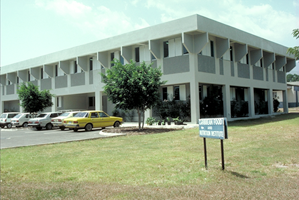
In the English-speaking Caribbean countries, a manual was prepared on the nutritional management of HIV infection, and health workers from the 18 member countries of the Center for Food and Nutrition of the Caribbean (CFNI) received training in its use and evaluation. The manual was translated into Dutch and adapted for use in Suriname. A training manual on the comprehensive management of adults living with HIV, which is to be used in primary and community health care throughout Latin America and the Caribbean, was launched with the support of the Spanish Agency of International Cooperation.
During the Second Special Session of the United Nations General Assembly on HIV/AIDS (UNGASS), held in June 2006, Member States adopted a new political declaration on HIV. During the session, the Organization's delegation stated that the existing political will and joint work of all the countries have had a clear and notable effect in the Region. However, efforts and commitments to fight the epidemic should redouble, clearly stressing an equity, gender, and equality approach as a way to reduce the troubling stigma and discrimination that remain, as well as to identify major inequities to access.
The First National Health Forum for Indigenous Peoples was held in Costa Rica. Approximately 250 delegates from indigenous communities participated, as did representatives from the health sector, civil society, and other related public entities; experiences from Brazil, Chile, Colombia, Ecuador, Guatemala, Mexico, Nicaragua and Panama were presented. Partnerships and joint proposals were established with other sectors for improving living conditions of indigenous groups, increasing the timely access to quality care, and reducing disadvantages with non-indigenous populations.
In Honduras, cooperation focused on harmful conditions faced by Miskito from the Atlantic Coast, who develop a number of disabilities as a result of the acute decompression syndrome they suffer because of the precarious conditions in which they work. In an effort to solve this problem, PAHO and Inter-American Commission on Human Rights of the OAS summoned the health, education, labor, and justice sectors, as well as organized civil-society groups to discuss the issue. As a part of the agreements, PAHO evaluated the health services installed capacity and refurbished two hyperbaric chambers.
In Costa Rica, a project with the Cabécar people includes environmental education and sanitary infrastructure components. The effort receives support from the South Central Regional Directorate and the Department of Basic Sanitation of the Costa Rican Social Security Fund; the Development Association, the community's board of education and school trustee boards, schoolteachers, and primary health care technicians who facilitate the project locally also participate.
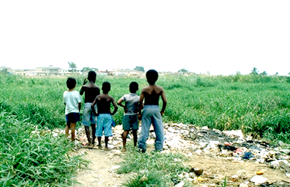
In Colombia, health care models have been designed for communities of indigenous people, African descendents, raizales (an ethnic group living in the San Andrés, Providencia, and Santa Catalina archipelago), and gypsies, which will be incorporated into national social protection policies. One of these models, a partnership venture with the Canadian International Development Agency, has helped expand directly observed treatment, short-term (DOTS) to combat tuberculosis in indigenous populations living in departments with a high prevalence of the disease.. An of 80% compliance among the targeted indigenous population was reported, which shows the good effect that the community's participation in the design, implementation, and dissemination of the products can have; closer relations between the authorities and ethnic groups has also been achieved. The indigenous groups participated in national consensus-building boards, providing technical elements to guide national policies on intercultural aspects.
In Paraguay, dispensaries and health posts continued to be built in the Department of Boquerón as part of the Paraguayan Chaco Sustainable Development Project, which helped reverse the exclusion from the health care system of these indigenous populations. With financial support from the Canadian International Development Agency, the project "Primary health care and interculturalism among indigenous peoples of central Chaco" was implemented to improve sanitary conditions and reduce the communities' social exclusion. Human resources in health from the community were trained, and methodologies and guidelines for the care and monitoring of priority health problems were prepared, using and integrated approach and intercultural criteria.
The regional project for improving environmental conditions (water and sanitation in indigenous communities that had been was carried out with the German Agency for Technical Cooperation came to a close. The project was designed to improve precarious environmental conditions in those communities, particularly in regard to drinking water quality, adequate excreta elimination, and improved hygiene practices. Argentina, Brazil, Bolivia, Chile, Colombia, Costa Rica, Ecuador, El Salvador, Guatemala, Honduras, Mexico, Nicaragua, Panama, Peru, and Venezuela have successfully constructed an organizational network that reaches approximately 45,000 people directly. As a result, indigenous communities have access to water supply, home sanitary units, improvements in housing, communal latrines, and appropriate-technology manual sanitary micro-landfills technology; they also are able to tap additional financial resources. A critical aspect of this effort has been the special attention given to the creation and strengthening of capabilities at the organizational and individual levels, and to the production and dissemination of information.
In El Salvador, with the participation of the Salvadorian Indigenous Coordinating Council, a national working group systematized results and lessons learned from a project designed to strengthen administrative water and sanitation boards in five indigenous communities in 2004–2005;" the administrative water and sanitation boards and members of community support networks also shared their experiences.
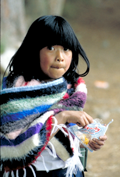 In Panama, a project was implemented with the Kuna, Emberá-Wounan, Ngobe-Buglé, and Teribes indigenous groups, who have the worst socioeconomic and health development indicators in the country. The project's goal was to reduce the burden of disease and death due to diseases linked to water pollution and poor sanitation conditions, while adapting technology to these peoples' sociocultural patterns and taking advantage of traditional forms of organizing. Surveillance was conducted on water quality for human consumption and water disinfection using culturally appropriate technologies; hygiene education also was provided, and the community actively participated through environmental committees or administrative water boards. More than 50 Ministry of Health officials who work in aspects of interculturalism with indigenous groups received training.
In Panama, a project was implemented with the Kuna, Emberá-Wounan, Ngobe-Buglé, and Teribes indigenous groups, who have the worst socioeconomic and health development indicators in the country. The project's goal was to reduce the burden of disease and death due to diseases linked to water pollution and poor sanitation conditions, while adapting technology to these peoples' sociocultural patterns and taking advantage of traditional forms of organizing. Surveillance was conducted on water quality for human consumption and water disinfection using culturally appropriate technologies; hygiene education also was provided, and the community actively participated through environmental committees or administrative water boards. More than 50 Ministry of Health officials who work in aspects of interculturalism with indigenous groups received training.
As of 2006, the regional community project, Integrated Management of Childhood Diseases (IMCI), had been implemented in 32 low-income communities in 10 countries, many of them indigenous, as is the case with in Pailaviri in Bolivia and Huancané in Peru. In Ecuador, a workshop to validate a manual for intercultural work with indigenous communities was conducted as a way to strengthen the intercultural approach to health within the community component of the IMCI strategy.
In Bolivia, a childbirth model using an intercultural approach was pursued in the departments of Potosí and La Paz; it will be implemented throughout the country in accordance with a recently signed ministerial resolution. With support from the Italian Cooperation and Save the Children, guidelines for intercultural maternal care were produced, and the document "Protocol for culturally adapted maternal and neonatal treatment" was published. Two manuals also were produced for traditional midwifes: a "Manual for the Traditional Midwife in the Highlands" and a "Manual for the Traditional Midwife in the Lowlands."
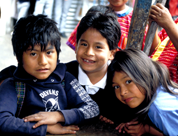 In Mexico, the program for preventing and eliminating trachoma in the highlands of Chiapas is being carried out. This disease affects indigenous populations (predominantly Tzeltales), especially women and school-aged children. The program envisions a comprehensive and participatory approach to the problem in the community using the SAFE strategy: surgery to treat end-stage disease, antibiotics to reduce the reservoir of infection, facial cleanliness, and environmental improvements to reduce transmission of C trachomatis. Between 2002 and 2005, the program's coverage of ocular exploration to detect trachoma increased from 21% to 97% (as of April 2006) in the at-risk communities, and met all the criteria for eliminating trachoma as a cause of blindness (including providing antibiotic treatment for all detected cases). This experience can serve as a model in other countries.
In Mexico, the program for preventing and eliminating trachoma in the highlands of Chiapas is being carried out. This disease affects indigenous populations (predominantly Tzeltales), especially women and school-aged children. The program envisions a comprehensive and participatory approach to the problem in the community using the SAFE strategy: surgery to treat end-stage disease, antibiotics to reduce the reservoir of infection, facial cleanliness, and environmental improvements to reduce transmission of C trachomatis. Between 2002 and 2005, the program's coverage of ocular exploration to detect trachoma increased from 21% to 97% (as of April 2006) in the at-risk communities, and met all the criteria for eliminating trachoma as a cause of blindness (including providing antibiotic treatment for all detected cases). This experience can serve as a model in other countries.
In Guatemala, trachoma has been detected by screening populations in endemic areas, especially the most affected groups and their contacts. During 2005, 7,800 people were examined in 92 communities (with a total population between 75,000 to 100,00 persons, most of them indigenous) in the departments of Sololá and Suchitepéquez. There were 633 active-disease cases detected, which were treated with tetracycline ointment, at low-cost or no cost, through a program run by Guatemala's Pro Blind and Deaf Committee. An educational and promotion program has been developed, which coordinates its work with activities to improve sanitation and access to clean water.
The increase I longevity and the consequent aging of the population poses one of the major public health challenges in Latin America and the Caribbean. In the last 25 years, life expectancy at birth for in Latin American and Caribbean inhabitants has increased by 17 years; 78.9% of persons born in the Region will live to be older than 60 years, and almost 40% will live beyond 80 years old.
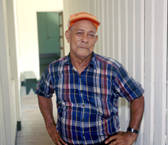 In Belize, the Cabinet adopted a policy for elderly persons and established the National Council on Aging to monitor its implementation. A National Plan of Action for the Elderly and a strategic plan were drafted to guide Council programs. A comprehensive health care system will provide drugs for elderly people is currently under study. The system will also enhance the elderly persons' abilities to promote their basic human rights and freedoms.
In Belize, the Cabinet adopted a policy for elderly persons and established the National Council on Aging to monitor its implementation. A National Plan of Action for the Elderly and a strategic plan were drafted to guide Council programs. A comprehensive health care system will provide drugs for elderly people is currently under study. The system will also enhance the elderly persons' abilities to promote their basic human rights and freedoms.
In Cuba a commission was set up to analyze the factors and conditions that lead to quality life expectancy for those 60 years old and older, and to generate proposals to upper levels of the National Health System and the Government. Among the commission's functions are the identification of adequate indicators for local settings, the management of the national program; development of research, and design of integrated and participatory actions. The Commission is made up of groups of specialists from the health and other sectors; representatives form the municipios; the National Program to Care for Older Adults; the Observatory on Burden of Mortality and Life Expectancy; and the Ministry of Health's Research Center on Longevity, Aging, and Health also participate.
In Chile, a monograph systematizing the experiences of Latin American health institutions with respect to older adults was prepared. It includes material designed to incorporate the concept of self-care into national health policies; it also presents experiences that led to structural or organizational changes that foster self-care, and those used in professional practice at the institutional level. The monograph was prepared with the Pontifical Catholic University, health sector professionals, human resource training institutions in health (academia), health services networks, older adults and their organizations, advisors from Brazil, Chile, and Mexico, as well as North American partners such as the University of Cleveland (USA) and the University of Ottawa (Canada). With support from the National Commission on Scientific and Technological Research, a telephone assistance project for older adults—the "Telephone Model of Care"—was implemented as a component in the cardiovascular program.
Training workshops on human rights of the disabled were held in Antigua and Barbuda, Argentina, Barbados, Brazil, Chile, Costa Rica, Ecuador, El Salvador, Grenada, Guatemala, Honduras, Nicaragua, Panama, Paraguay, Peru, and the Dominican Republic. These workshops represent a form of technical collaboration to countries designed to help them formulate or reform policies, plans, legislation, and services linked to rehabilitation, as well as to coordinate national networks for promoting and protecting the rights of the people with disabilities, be they physical, mental, sensory, or of any other nature. In some countries, technical committees have been established that are working on disability policies and legislation (especially mental disability), in accordance with human rights and disability international guidelines and standards. Some countries have begun to put in place mechanisms to deal with complaints and to monitor the rights of people with disabilities by conducting of on-site visits.
Panama established a National Plan on Disability, 2005–2009. It includes actions to improve access to rehabilitation services and appropriate technical aids. The Cabinet for Social Issues and the National Advisory Board for the Social Integration of People with Disabilities has been charged with developing and monitoring the plan; the National Secretariat for the Social Integration of People with Disabilities is responsible for its implementation and for the coordination and alignment of work with the ministries. Activities such as providing prenatal examinations to detect disabilities early and the fortifying of food with folic acid and vitamin A for preventing disabilities from nutritional causes have been included in a comprehensive health care package that is free to the most vulnerable and remote populations. The program "Inclusion" also was created, establishing intersectoral activities such as the development of architectural standards or the provision of incentives for "inclusive" schools.
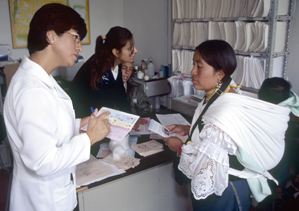
In El Salvador, Honduras, and Nicaragua, a comprehensive care plan for people with disabilities has been developed, incorporating a strategy of community-based rehabilitation. This strategy focuses on the community's active participation, the use of simple technology, and a reliance on public health service systems. The health, education, and labor sectors, as well as city halls and nongovernmental organizations, are involved in the process, and local rehabilitation commissions have being formed. As a result of putting the plan in action, more disabled persons have been incorporated into the productive arena, children have been mainstreamed into regular schools, and the infrastructure and equipment at rehabilitation services has been renovated.
In Paraguay, after a petition calling for measures to protect persons admitted to the country's Neuropsychiatric Hospital was reviewed, the management and operation of the mental health services network was strengthened, the hospital's infrastructure was improved, and mobile mental health teams were created. Work with civil society and other cooperating partners, such as the psychiatry chair at the National University of Asunción, led to a more vigorous development of national processes. Support was provided for training national staff outside of the country, and workshops on "Mental Health Policies and Health Services" and on "Human Rights and Mental Health" were held domestically. A one-day retreat also was carried out with staff from the mental health program and the psychiatric hospital to enhance humanitarian and quality care.
In Guatemala, Hurricane Stan caused damage in 251 of the country's 331 municipios, affecting 130,179 persons; many were left dead or missing. In response, the Government and the United Nations system coordinated humanitarian aid plans to provide water, sanitation, and hygiene; nutrition and food nutritional safety; and health care. The plans were financed with US$ 3,135,844 contributed by countries that responded rapidly to the urgent interinstitutional plea (Flash Appeal): Canada, the Netherlands, Monaco, Norway, Sweden and the Office of U.S. Foreign Disaster Aid. The flexibility of the administrative systems for facilitating procurement of necessary products at the national level and the rapid availability of medical services and supplies to prevent the spread of communicable diseases common to disasters deserve mention. In El Salvador, responses also included the establishment of refugee centers, mobilization
of health workers, improvement of basic health services, installation of latrines, and provision of water-purifying equipment.
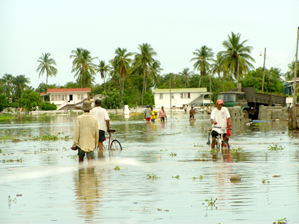
In Guyana, after 2005 flooding, PAHO provided for a water, environment, and sanitation plan to mitigate the disaster's impact in 33 schools in the most affected areas in Georgetown and along the East Coast. Sanitation efforts such as the installation of toilets were undertaken. In addition, water storage capacity was increased by installing additional tanks, and water pumps were installed where there had been none and damaged ones the flood were replaced. Solid waste collection also was improved through provision of storage dumpsters.
In Grenada, a project developed to complete reconstruction of the Richmond Hill Home for Older Adults, whose structure was seriously damaged by the impact of hurricanes Ivan and Emily.
In Haiti, medical equipment and drugs were distributed to hospitals in Jacmel and Les Cayes, and physicians were trained in emergency management of natural and man-made disasters and of industrial accidents.
PAHO also collaborated with the International Rehabilitation Center to develop contingency plans to evacuate disabled patients during emergencies and disasters.
Venezuela has 17 social missions that function as state programs for the rapid and massive inclusion of the population and the adaptation to its needs. The mission Barrio Adentro ("In the Neighborhood"), which began in 2003 in a Caracas municipio, lies at the heart of Venezuela's health system transformation. This effort has been made possible thanks to the support of the Cuban government, which by the end of that year had sent nearly 12,000 Cuban physicians to provide coverage nationwide. At this juncture, there are nearly 8,500 new consultation sites in the poorer areas of the country, thousands of which operate out of homes in slums that temporarily house the Cuban physicians and their offices until 5,500 new physicians' offices are built. There also are 4,000 dentists and hundreds of ophthalmologists deployed. In March 2006, a workshop intended to systematize the Barrio Adentro experience began to be held; it is made up of members of the Cuban Medical Mission, international consultants, and officials from the United Nations Education, Science and Culture Organization (UNESCO) and from PAHO. Barrio Adentro II (involving the construction of 600 centers for comprehensive diagnosis and 600 rooms for comprehensive rehabilitation) and Barrio Adentro III (designed to strengthen and equip the traditional hospital network) will follow.
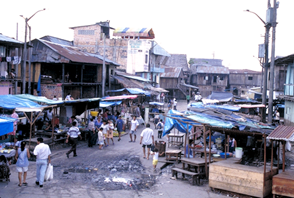
In Peru, a Comprehensive Health Insurance (SIS) scheme was created in 2002 to administer funds destined to finance individual health care for poor and extremely poor pregnant women and infants, adolescents, and Amazon inhabitants who have no health insurance. SIS has a partial contribution component for population groups with limited purchasing power; its main impact, however, has been to more than double insurance coverage of the poor, which rose from 30.1% in July 2001 to 70.5% in December 2005. The SIS experiences and outcomes have stimulated and fostered a national consensus on the need to move toward a national health insurance plan for the entire population that covers all vital basic needs; all political forces and the recently elected government have committed themselves to this scheme.
In 10 Caribbean countries, the Small Grants Program –funded by the U.S. Department of Agriculture and with the Inter-American Institute for Cooperation on Agriculture functioning as an operating partner–provides opportunities for community groups (23 to date) to design and execute small innovative projects aimed at improving nutrition and food safety and at reducing poverty. An evaluation showed that every group has laid a solid foundation for sustaining production activities, and that it has gained income, generated employment, and provided food for personal consumption through the project. A multiplier effect is expected, as more funds will increase the scale of existing activities and will enable new projects to be carried out.
In Nicaragua, local development efforts have continued to be carried out in poor municipios that are highly vulnerable because they lack food and nutritional safety. Efforts focused on coordinating initiatives aimed at promoting an integrated approach to healthy and productive municipios, technology transfer and training, horizontal technical cooperation, mobilization of resources, and consensus-building. In addition, in order to channel cooperation toward the 11 departments identified as priorities, PAHO's Country Office has been functionally structured so as to be able to effectively provide decentralized technical cooperation. These changes have entailed close work with local authorities (autonomous governments, municipal governments, and entities decentralized from the national government), as well as the provision of support for the development of local capabilities and the coordination of efforts with other partners. This initiative is being systematically analyzed in order to identify lessons that can be used in other Country Offices in the future.
The strategy of Healthy Municipios and Communities (MCS in Spanish) represents a local manifestation of one of the most effective health promotion initiatives. It focuses its work more on health determinants than on results of disease. Argentina, Costa Rica, Cuba, Mexico, Paraguay, and Peru have national MCS networks; while Brazil, Canada, and the United States have established active networks at the subregional level.
Costa Rica put forth a National Strategic Plan for Ecological and Healthy Cantons, 2005–2015, with 55 cantons participating. The strategy for ecological and healthy cantons is a valuable tool for improving social and health indicators at the local and regional levels, thus reducing gaps and inequities.
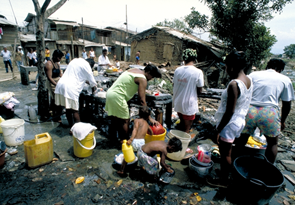
In Paraguay there was a participatory evaluation of an ongoing project that began in 2002 in the municipio of Emboscada, where more than 20% of the population lives in extreme poverty. The project is designed to strengthen local management through the development, execution, and monitoring of multisector projects that involve broad social participation and that target improvements in the standard of living and welfare of the population in terms of health, the environment, and education. In three years, several projects were developed: vermiculture ventures for domestic and commercial use, healthy quarries, disposal of contaminated solid waste from a health center, strengthening school and family vegetable gardens, preparation of soy-based food, establishment of dining halls for children (where which mothers are also taught to cook with local products), and improvements in child health care, among others. The IMCI program was implemented, and it has led to an increase in child health monitoring consultations and in training of mothers to better care for their children.
In Uruguay, through a "healthy community" approach, projects were undertaken in needy areas, mainly targeted at promoting community participation in the search for solutions in at-risk rural and outlying urban populations. Areas and regions have been pre-selected, with the active involvement of municipal governments, as well as the participation of the Ministry of Livestock, Agriculture and Fisheries, PAHO, other ministries, national development programs (such as Uruguayan Rural/IFAD), NGOs, and the target communities. In the First National Meeting of Productive and Healthy Communities, held in Montevideo in 2006, progress was reviewed and future strategies and plans were designed.
In Colombia a cooperation program has been carried out since 1998 that is designed to improve access to health goods and health services by displaced populations. It is supported by donor agencies from Canada, the United States, and the European Union. Educational materials have been designed and disseminated with the participation of the beneficiaries and authorities. In addition, software has also been designed and developed for organizing the database of displaced populations, and the use of the health information system and epidemiological surveillance of these populations has been fostered and supported. In coordination with health officials, eight field offices were established in the cities and departments with the most displaced people; in addition to working with the displaced person programs, these offices have supported officials in mitigating the effects of natural disasters that have affected the country this year, particularly floods and landslides caused by seasonal rains, and emergencies resulting from volcanic eruptions.
In Haiti, PAHO helped design, finance, monitor, and evaluate a sanitation project to help improve the appearance of some areas in Cité Soleil, the largest neighborhood in Port-au-Prince. The project's broad general goals are to create a health bridge for peace; generate temporary jobs for young people; and help improve unhealthy environmental conditions through a campaign for public sanitation coupled with health education and social mobilization activities.
In Mexico, the Popular Health Insurance, which officially started in January 2004, aims at progressively providing the uninsured population with an option for voluntary public insurance. The regimen covers member families with a specified package of essential options plus some selected medical treatments considered "catastrophic" because of their high cost. For each member family, the federal and state governments contribute resources, which are supplemented by small family quotas contributed by the beneficiaries and determined according to the family's income level. By October 2005, the number of families protected by the popular insurance scheme had reached approximately 3 million; by the end of 2006, coverage is expected to reach 5 million families, or approximately 20 million Mexicans.
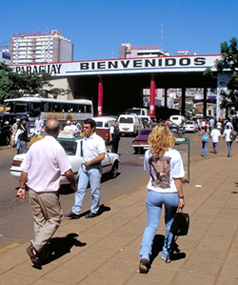
The governments of Ecuador and Colombia have agreed to structure a Binational Border Integration Development Plan, which includes projects to monitor and prevent public health events, as well as strengthen water quality assessment in the systems in the border corridor. At the Meeting of the Binational Technical Health Commission (March 2006), binational cooperation was evaluated and activities and projects on behalf of the border population were identified.
At the U.S.-Mexico border, work is under way to advance the program "Healthy Border 2010", which aims at improving immunization coverage in children under 4. The program is carried out in partnership with the U.S.-Mexico Border Health Commission, the United States Centers for Disease Control and Prevention, and Mexico's Ministry of Health, as well as with many collaborators in the border states. As part of the ongoing strategy to monitor vaccination programs, since 2004 three bi-national vaccination weeks are held each year along the border. In El Paso, Texas, Mexican immigrants are vaccinated through the Mexican Consulate's "Window to Health".
In 2005, within the framework of the Cross-border Municipios Strategy," various municipal and cross-border initiatives were proposed and developed, many of them conceived through the horizontal cooperation between countries approach. El Trifinio region (El Salvador, Honduras, and Guatemala border); the Gulf of Fonseca Corridor (El Salvador, Honduras, Nicaragua border); the Nicaragua-Costa Rica border, and the Costa Rica-Panama border are examples of this approach. The Nutrition and Food Safety Initiatives have fostered the development of rural food-production microenterprises managed by women, and the transfer of new technologies to existing enterprises in order to produce safe food.
Along the border of Brazil and Uruguay (in the departments of Artigas and Rivera, which have extremely high levels of poverty), a multi-sector and community-leadership initiative is under way. the activity has been conceived within the framework of the strategy of productive and healthy communities. The initiative in Uruguay promotes specific health promotion and prevention components and treatment of sexually transmitted infections and HIV, coordinated in collaboration with initiatives on the Brazilian side of the border. The initiative targets the most vulnerable population groups, such as street children, adolescents, sex workers, prisoners, and drug users.
The Regional Malaria Program developed a strategic malaria control plan for 2006-2010. The program addresses current challenges posed by malaria in the Region and discusses PAHO's priority areas for technical cooperation. The "Roll Back Malaria" initiative is framed within the Millennium Development Goal for reducing and eliminating the incidence of malaria (and other important diseases) before 2015.
Mexico and the Central American countries are carrying out a project to promote community participation in malaria control. With financing from the U.S. Agency for International Development (USAID), the countries that share the Amazon jungle in South America have formed a network that, among other activities, has facilitated research designed to define malaria treatment policies. Under PAHO's leadership, Bolivia, Ecuador, Guyana, Peru, Suriname, and Venezuela are currently using artemisinin combination therapies to treat malaria. In the last five years, case reductions in Argentina, El Salvador, Mexico, and Paraguay have been constant and substantial enough to conclude that transmission may have been eliminated in those countries. No case of malaria reintroduction has occurred in these countries.
In Central America, PAHO participates in the technical coordination and transfer of the strategy known as "focalized treatment," which has financial support from the Global Environment Fund and technical collaboration from Mexico's Ministry of Health. The strategy, which has been successfully implemented in Mexico, includes comprehensive epidemiological stratification, monthly single-dose treatments, elimination of parasites in populations where cases persist, and ecological anti-larval control involving the community's participation and improvements in housing and family hygiene.
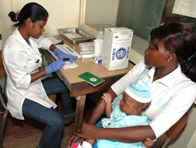 In Suriname, following a Ministry of Health initiative, PAHO has adopted an integrated and coordinated approach to support the control and prevention of malaria among affected groups. PAHO coordinates research activities in the Surveillance Network of Resistance to Anti-malarial Drugs in the Amazon region, in cooperation with the Amazon Anti-Malaria Initiative and USAID, and uses the results to implement the Global Fund To Fight AIDS, Tuberculosis, and Malaria (GFATM).
In Suriname, following a Ministry of Health initiative, PAHO has adopted an integrated and coordinated approach to support the control and prevention of malaria among affected groups. PAHO coordinates research activities in the Surveillance Network of Resistance to Anti-malarial Drugs in the Amazon region, in cooperation with the Amazon Anti-Malaria Initiative and USAID, and uses the results to implement the Global Fund To Fight AIDS, Tuberculosis, and Malaria (GFATM).
In 2005, the "Regional Strategic Plan for Tuberculosis Control 2006-2015" was prepared in close collaboration with the countries. It includes a commitment to implement or strengthen TB/HIV collaboration activities and specific strategies for vulnerable populations, with the goal of achieving a tuberculosis-free Region. PAHO also encourages the national TB control programs to respond with innovative initiatives aimed at greater access to health services, adequate identification of cases and positive treatment results. Such initiatives require a combination of intersectoral commitment, social mobilization, and application of internationally recognized strategies.
In Brazil, progress in implementing the action plan for the control of tuberculosis 2004–2007 and the DOTS strategy, with special emphasis on the 315 priority municipios, has produced significant advances in DOTS coverage, which rose from 34% in 2003 to 52% in 2004. With PAHO support, the country is preparing its Strategic Plan 2006–2015, aimed at meeting the millennium goals and reducing the prevalence and mortality of tuberculosis by 50%.
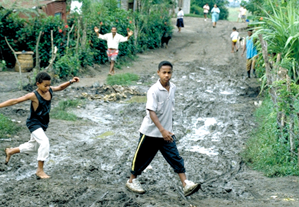
In the Dominican Republic, PAHO has continued to |provide technical cooperation to the National Program for Tuberculosis Control, by improving the managerial and operational capacity at the provincial levels and at health centers. As a part of the DOTS strategy and the Zero Tolerance Mobilization, PAHO supports improved capabilities for laboratory diagnosis, information systems, data interpretation and use, and social participation and mobilization. Tuberculosis control and prevention initiatives have helped to cure more than 85% of treated patients, and a attained a detection rate greater than 70%.
PAHO has played a key role in the prevention, control, and surveillance of Chagas' disease via the technical secretariat of the subregional initiatives (the Southern Cone Initiative, the Central America Initiative, the Andean Countries Initiative, the Amazon Initiative for Surveillance and Control, and the Mexico Initiative), as well as in providing support for specific country activities. As a result of effective control measures, health services in most of the countries where Chagas'disease is endemic, report fewer incidences of acute cases and a reduced prevalence of chronic cardiovascular or digestive pathologies because primary infection and reinfection in the exposed population are lower. In 2006, within the framework of the Southern Cone Initiative, vector-borne transmission of Trypanosoma cruzi by Triatoma infestans was interrupted throughout Brazil (in 13 endemic states); soon, Paraguay will certify interruption of transmission throughout its Eastern Region. In Central America, the subregional initiative has significantly advanced in eliminating the leading household vector in all countries; effective household elimination has been achieved in areas of Guatemala and Honduras. The countries of the Andean Countries Initiative are also working to implement national programs. The Amazon Initiative of Chagas' Disease has begun to implement surveillance, in tandem with malaria surveillance. In Mexico, progress has been made in defining prevention and control priorities by formulating new health standards and pilot initiatives in one state.
In the Dominican Republic, innovative strategies to prevent and control dengue are being developed. These include include community participation and emphasize communication to change behavior. The memorandum on diagnosis and management of dengue/dengue hemorrhagic fever was updated and published, and contributions were made to the preparation and publication of guidelines for management of infectious diseases in the country; both aimed at improving quality care.
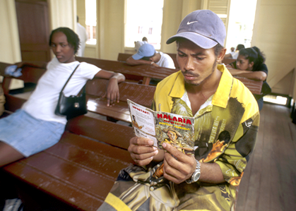
In 2005, the socialization and implementation of the
Global Strategy to Continue Leprosy Reduction and Sustainable Control Measures (2006-2010) began in the English-speaking Caribbean and MERCOSUR countries. The strategy aims at achieving sustainability by incorporating diagnostic, treatment, and prevention-of-disability activities at primary care services, as well as maintaining an adequate surveillance system of cases, recurrences, and disabilities to continue advancing toward the long-term objective of interrupting transmission of leprosy. A meeting of managers of leprosy control programs was held in Guyana in May 2005, and a meeting also was held for managers from MERCOSUR countries. Paraguay prepared a project to strengthen response capacity in leprosy control, which was submitted to Spain for cooperation, and another for leprosy and tuberculosis control, submitted to Germany for cooperation. The coordinators of leprosy control programs in the Dominican Republic and Paraguay also received support for preparing situation rooms for dealing with the disease.
Vaccination strategies for elimination of rubella and congenital rubella syndrome in the Americas have progressed rapidly. By June 2006, 84% of the countries and territories of the Americas had implemented vaccination plans, and large cohorts of adults had been protected. The English-speaking Caribbean countries, Bolivia, Colombia, Costa Rica, Ecuador, El Salvador, Honduras, Nicaragua, and Paraguay have completed massive vaccination campaigns for adult men and women, while Chile and Brazil vaccinated only women of childbearing age, reaching more than 95% coverage during the campaigns. The remaining countries will carry out campaigns during the second semester of 2006 and the first semester of 2007.
A series of practical guides were been published: on rubella, measles, poliomyelitis, neonatal tetanus, yellow fever, on the control of diphtheria, whooping cough, accidental tetanus, the invasive diseases caused by Haemophilus influenzae type b and hepatitis B. The first issue of "Immunization in the Americas," a pocket reference to monitor annual progress of countries in the Region on subjects of immunization, was published.
Hospital surveillance of rotavirus has been put in place in 10 countries, and an internal alliance has been created within PAHO to accelerate and facilitate the introduction of vaccines against human papillomavirus, which has been linked to cervical cancer.
In 2005, PAHO expressed the need to prepare the Southern Cone countries for the possible emergence of West Nile virus, due to outbreaks in the United States and isolated cases detected in Central America and Venezuela, as well as to the routes of migratory birds that transmit the virus. To this end, in 2005 and 2006, two international workshops were held at the National Institute of Human Viral Diseases in Argentina. At these workshops, epidemiologists and virologists were trained in theoretical and practical aspects of West Nile virus diagnosis and surveillance. On 19 April 2006, West Nile virus was detected in brain samples of three indigenous horses in Argentina; the Ministry of Health alerted provincial epidemiology centers, which disseminated and strengthened preventive measures and recommendations to diminish the risk of contracting the disease. To date, no more cases have been reported in horses or in humans.